The Ottawa Hospital Master Plan
The Ottawa Hospital’s new Civic campus development, which will be located on Carling Avenue adjacent to Dow’s Lake, will be the major referral centre for Eastern Ontario, Western Quebec and parts of Nunavut, and the Eastern Ontario Trauma Centre. As one of Canada’s largest acute care learning and research hospitals, the new campus will provide a full range of specialized services, research and education for those with the most complex injuries and illness.
Background of the hospital project
- 2007 - the Ottawa Hospital convened a Steering Committee to develop a Master Plan which concluded the current Civic Campus is too old and would be too difficult and costly to rebuild.
- 2009 to 2013 - the Ottawa Hospital was in discussions with the Government of Canada related to master planning for a new Ottawa Hospital campus and land requirements.
- 2014 - the Government of Canada commissioned the National Capital Commission to assist in the land transfer process to the Ottawa Hospital .
- December 2015 - the federal government requested a further review of the land options for the new campus and four sites were examined
- May 2016 to November 2016 – NCC Public Consultation and Site Selection
- December 2016 - Canadian Heritage requested that the Federal government make the Sir John Carling site available as the future location of the new campus of the Ottawa Hospital .
- May 2017 - the City’s Planning Committee recommended that staff initiate Official Plan and Zoning By-law amendment applications for this federal land use decision.
- September 2017 to January 2018 – public engagement strategy with nine open houses
- December 2017 and March 2018 – design sessions with the Urban Design Review Panel
- February 2018 - Public Services and Procurement Canada announced a 99-year lease between the Federal Government and The Ottawa Hospital for the development of a new campus.
- May to June 2018 – Official Plan and Zoning By-law amendments approved by Planning Committee and City Council through By-law 2018-198 to a new Institutional I2 Zone
Proposal master site plan
The proposed hospital site is located at 930 and 850 Carling Avenue and 520 Preston Street. The site is approximately 21 hectares in size within Ward 16 and adjacent to Wards 14, 15, and 17 (see Figure 1).
The site is irregularly shaped and bound by Carling Avenue to the north, Prince of Wales Drive and Preston Street to the east and is loosely bound by the National Capital Commission Scenic Driveway to the south and Maple Drive to the east. The Trillium line (O-Train line) bisects the eastern part of the site.
The primary access for staff and visitors is off both Carling Avenue (across from Champagne Ave) and Prince of Wales Drive, accessing the new 4 storey parking structure.
The main hospital, which is located on the top of the escarpment, will be constructed after the parking structure and once services and utilities are established. The New Hospital Building includes a Central Podium, which will be two storeys, supporting the 2.5 million square feet of hospital space. The Central Podium has two entrance points. Visitors and patients will primarily access the hospital from the parking garage, rapid transit along Carling Avenue and the Carling LRT Station, with access via a pedestrian bridge from the parking facility to the main hospital building. A covered Emergency Department ambulatory drop-off will also be available on the east side of the building for visitor and patient access. First responders and ambulance transfer services, including the ambulance garage, will access the hospital from auxiliary entrances facing west.
Two patient care towers will flank the Central Podium, with the South Tower intended to be 12 storeys and will include a Helipad on the 12th floor, and the North Tower intended to be eight storeys. The proposed eight-storey North Tower is anticipated to be expanded vertically in future phases. The Main Plaza will connect the Central Podium to the entrance from Champage Avenue and Carling Avenue, providing vehicular, pedestrian and transit-user access to the main entrance.
Building Twenty-first-century health care in the heart of the nation’s capital
Due to the size of the project, the new Ottawa Hospital will be completed in phases. The Master Plan currently outlines 10 phases.
2021: Master Site Plan approvals
2022-2023: Parking garage
2024-2026: New Hospital Central Utility Plant
2024-2028: New hospital
TBD: Potential LRT Station expansion
2024-2029: Research Tower
2029-2039:
- Carling Tower A
- Carling Tower B
- Carling Tower C
2024-2028: Rehabilitation Unit
2035-2038: New Hospital expansion
2045-2048: University of Ottawa Heart Institute expansion
Key decision points
- October 1, 2021 – Master Plan approval by Joint Built Heritage Sub Committee and Planning Committee
- October 5, 2021 – Master Plan approved by NCC Board
- October 27, 2021 – Master Plan approved by City Staff
- November 5, 2021 – Urban Design Review Panel review
- November 26, 2021 – Advisory Committee Planning Design Realty review
- January 20, 2022 – Phase 2 parking garage schematic design approved by NCC Board
- February 10, 2022 – Phase 2 parking garage endorsed by Planning Committee
- March 15, 2022- Federal Land Use Design approval granted to enable early works
- May 10, 2022 – Final Phase 2 parking garage Urban Design Review Panel review
- September 27, 2022 – Phase 2 parking garage approved by City staff
- May 21, 2024 – Phase 3 and 4 Site Plan Control approved by City staff
Previous approvals
- Master Site Plan approval
- Phase 2 Site Plan approval (parking garage)
- Planning Committee Master Plan Approval meeting minutes
- Planning Committee parking garage approval meeting minutes
- Phase 3 (Central Utility Plant) and Phase 4 (Main hospital building) Site Plan Control approval
Phase 3 and 4 Site Plan Control Application
The subject application is both the third and fourth phase of the Master Site Plan consisting of a Central Utility Plant with electrical, heating and cooling equipment (Phase 3) and the main Hospital building (Phase 4). The main Hospital building will consist of approximately 230,000 square metres of gross floor area comprising a two-storey podium, two towers (Towers A and B) which will house the majority of the patient rooms, and a Pavilion flanking the Main Entrance. The Pavillion will consist of meeting and conference rooms, an auditorium, retail spaces, a cafeteria, and will connect to the weather-protected highline pathway across the top of the four storey parking garage.
Tower ‘A’ is eight storey’s and closest to Carling Avenue and the Dominion Observatory Complex. Tower ‘B’ is twelve storeys and is located south of Tower ‘A’.
Phase 3 and 4 will also consists of landscape improvements to enhance accesses to the Hospital and will complete the construction of separated pedestrian and cycling facilities through the site on the east side of internal Roads A and B. It will also complete a multi-use pathway on the south side of the main entrance and a sidewalk on the north side to provide access to the main entrance. The relocation of existing services located within the site and offsite intersection improvements will be necessary to enable these phases.
Timelines
Important dates include:
- September 20, 2022 Accessibility Advisory Committee meeting held
- November 15, 2022 Pre-consultation with Local Community Associations held
- Q4 2022 Phase 3 and 4 Site Plan submission to the City
- Q1 2023 City’s Urban Design Review Panel Review;
- Q1-Q2 2023, Public Information Meeting, Review and Issue Resolution
- Q2 2023 NCC Advisory Committee on Planning, Design and Realty
National Capital Commission involvement
- Requires an NCC Federal Land Use and Design Approval granted under the National Capital Act by the NCC
- NCC review is guided by Project Specific Performance Criteria including integration, design excellence and sustainability
- Schematic Design to be reviewed against Federal legislation and plans, including NCC’s Plan for Canada’s Capital and the Capital Urban Lands Plan
- Will be reviewed by NCC’s Advisory Committee on Planning, Design and Realty
- Application requirements include reporting on public engagement
- Subject to NCC’s review and issue resolution – Board Approval
Stay informed and involved
- Register for future notifications about this site plan control application by providing your comments by e-mailing Stream Shen and adding File No. D07-12-22-0168 in the subject line.
- Access submitted plans and studies regarding this application online at ottawa.ca/devapps.




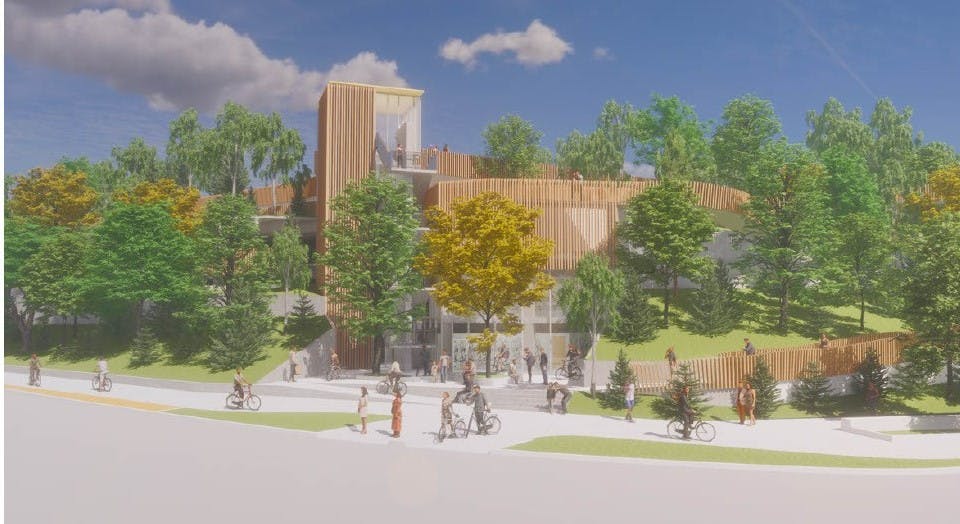
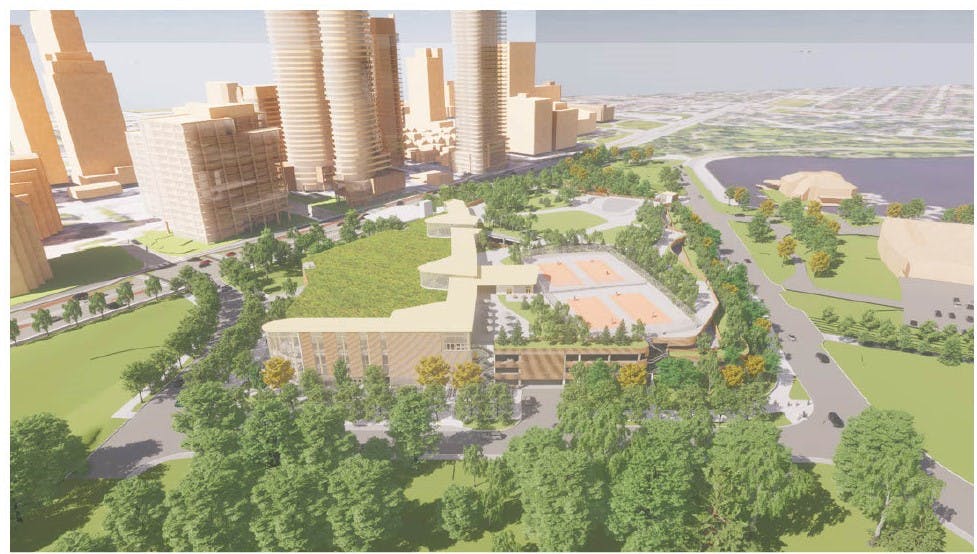
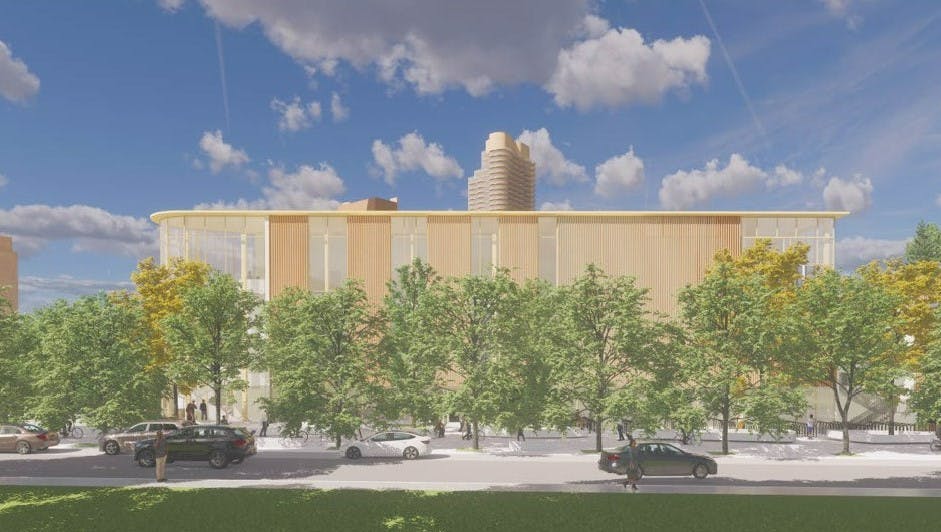
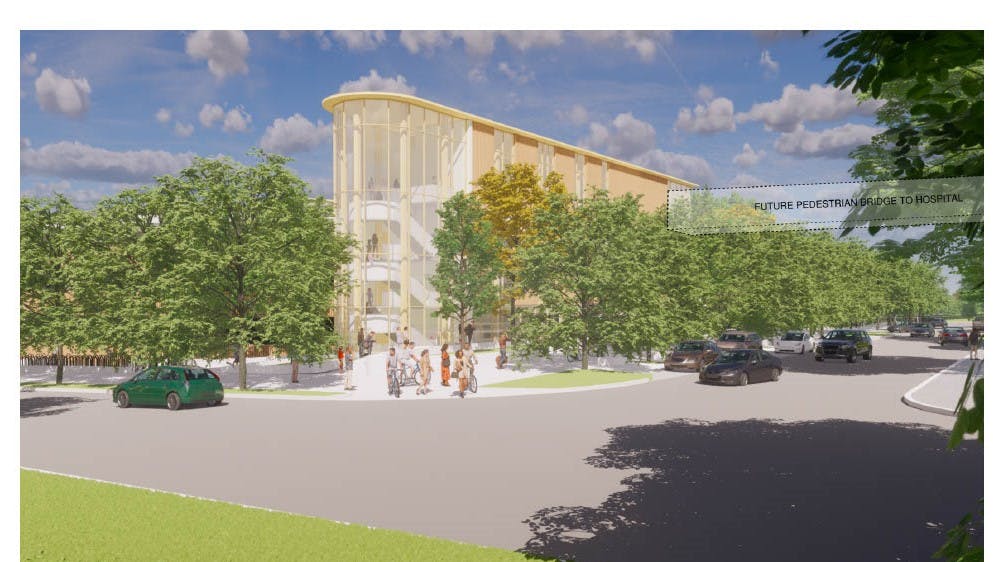
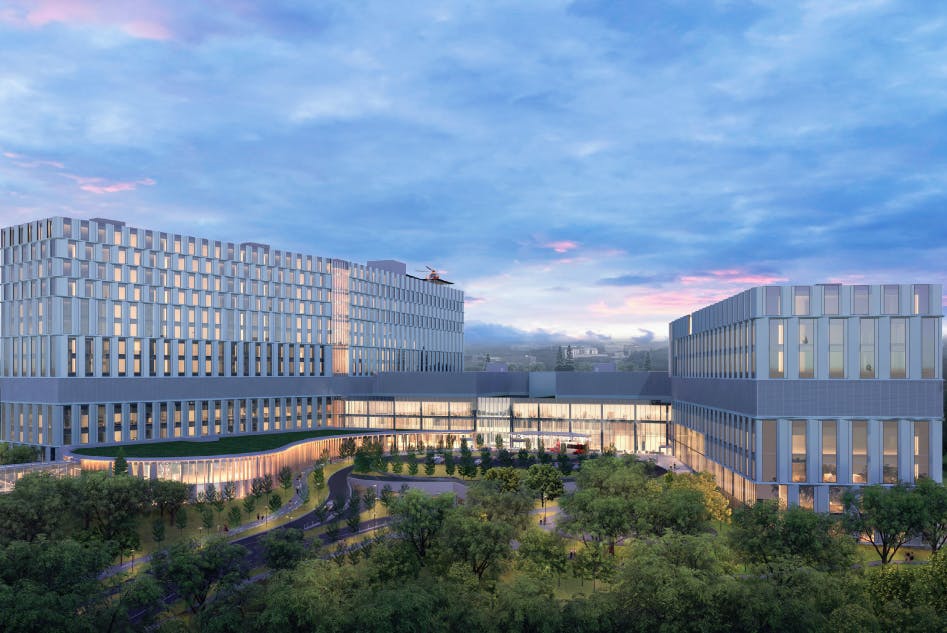
I am opposed to the hospital plan and the plan to build a new parking lot on the Queen Juliana Park Land on the Experimental Farm .The above ground parking lot is a bad idea for a number of reasons. There has never been an environmental assessment of the new hospital or the planned parking lot. We have no idea what the environmental impact will be of building a concrete parking lot across from Dow's Lake.
It is not too late to do the right thing and change the plan for the location of the Ottawa Hospital. It would be a travesty to build it at Dow's Lake, so close to the Arboretum. Ottawa needs more green space, not less; more and more research is showing the benefits to citizens. There are other locations that are still central and are closer to public transit, such as Tunney's Pasture and LeBreton Flats. Please, please reconsider this decision.
Tunney’s is the best site all around. Leave the Farm alone.
Removed by moderator.
Disappointed to see this plan includes a four story parking garage that would require destruction of the Queen Juliana Park. The plan to plant new rooftop trees isn't good enough - new trees won't have the same ecological benefits as older ones, not to mention we should be preserving AND planting trees to improve tree canopy, air quality, and cooling in the city.
There should not be a parking complex above or below ground. All our planning needs to foreground climate action and fast. We can't be encouraging driving with more car space. Instead we should be making this site as transit accessible as possible. Make it incredibly easy and fast for staff and visitors to get to the campus by bus so they do not need to drive. These routes could even be made fare free.
It seems transit access would have been much easier to provide at the original Tunney's site; now it is "not guaranteed" in planning documents. The Tunney's site would also save about 500 trees from being felled to build this campus at the Experimental Farm site... Just an overall lack of vision and concern for climate action, community spaces, and equitable transportation
Destroying the green space would be a tragedy.
Based on the magnitude of this project I’m assuming there will be a follow-up public consultation to the one held in June. Can you please confirm the timing for that event. Is there a record of the concerns that were brought forward along with how they are being considered and addressed?
With so many brownfield sites available and in light of many government and businesses opening up usable space due to a shift in work-from-home accommodations this location seems the wrong choice. Protect green space, reduce heat island effects and follow your own site analysis data posted here:
https://ehq-production-canada.s3.ca-central-1.amazonaws.com/fde2c5fb28901f9ae1dfb0fcad0b20ecab76b94c/original/1622053525/b9164f421de511387c9db76a9061b63e_toh_site_analysis_en.pdf?X-Amz-Algorithm=AWS4-HMAC-SHA256&X-Amz-Credential=AKIAIBJCUKKD4ZO4WUUA%2F20210910%2Fca-central-1%2Fs3%2Faws4_request&X-Amz-Date=20210910T083321Z&X-Amz-Expires=300&X-Amz-SignedHeaders=host&X-Amz-Signature=231528130d87ef54f7aa53bcf94d175298c64307770e7c05f9571c3fef92e0b6
The negatives highly outweigh the benefits, oh except cost! It’s always cheaper to dig up some trees and fields vs doing the work. I truly hope the municipal and provincial governments will listen to its residents and go back to the original plan of tunneys pasture.
Given that the location for this development has already been set adjacent to Dow’s Lake, a popular recreation destination for Ottawa residents and tourists, the Central Experimental Farm, the Arboretum, as well as the Rideau Canal UNESCO world heritage site, the developers of the site have a huge responsibility to uphold the character of the area, enhance the public realm, and to maintain connectivity for active transportation already existing on site. From what I can see, the cycling and walking connections are interrupted and this will create obstacles for public acceptance. The 2500 spot parkade is in a prime location, at the start of a scenic drive, not exactly a gateway structure to set the tone for a drive through the farm. It’s difficult to imagine the structure and see how integrated it will be with the landscape and how an elevated park will be used and maintained year-round. Will there be outdoor spaces for patients and visitors to the facility to help in their recovery? This would be one of the advantages for siting the facility in such a beautiful location.
I am definitely in agreement with most of the people/writers that the above ground parking building is not acceptable. I really do NOT agree with the present location of the new Civic, having always thought it should be located in Tunney's where there is a great deal more room to expand should more area be required as time goes by. The Experimental Farm is a special spot and one that is unique to Canada. It should be preserved at all costs. Traffic is already at a premium in the residential area around the proposed site and will only be worse as more and more high-rises are built, as they are presently proposed. Sherwood Drive used to be a quiet residential street and is rapidly becoming a speedway for autos in transition to get either to the Queensway or to Carling or Sommerset via side streets off Sherwood. There has to be a better solution!
Given very extensive and legitimate concerns about the suitability of the current site, and the profound and long-lasting consequences of this decision, is there any unequivocal reason not to reconsider the Tunney's Pasture location? Who has responsibility and authority to put the current plans on hold and initiate such a review?
The EIS conducted does not fully count all of the trees that might be lost should the hospital construction be allowed to proceed. Will the City conduct a full audit and recount of trees by an independent third party?
Have full geological studies been done of both the Tunney's Pasture and the experimental farm sites considered for the hospital relocation? I understand that the Central Experimental Farm has experienced tremors and is situated on a seismic fault.
I am amazing with the space the new hospital takes; this is a luxury in an established city and seems unnecessary. The Civic is already difficult to access - narrow busy road off the highway, limited transit options, etc. Why is it being moved a few kms down the road to an even worse spot to access?
I am also curious about emergency management planning. Most the city's hospitals are located downtown and could be inaccessible during a major event (think the shooting near the parliament buildings several years ago, that shut down access to the hospitals), a tornado that knocks out the area, etc. Has emergency management been accessed or urban sprawl been considered? Has traffic flow patterns been examined (including transit)? Has the effect of loosing green space and climate change been studied? Has the effect on the Central Experimental Farm's ability to do research been studied? It feels like a much more robust location study needs to take place before building the hospital. I am all for a world class hospital, but its location and sprawl needs to be considered.
It is nothing short of a travesty to select the Central Experimental Farm for the location of the new Civic Campus hospital. The Farm has been a gem for Ottawa, a testament to green space and research, and a wonderful zone for walking and biking within the nation's capital. Plunking a huge hospital in this area is completely absurd, particularly given the increased attention the climate and environment are now finally receiving.
But apart from the destruction of green space is access. As a frequent patient I am frustrated by the need to drive or be driven as the hospital is not on the new transitway. Parking is often full, and when a space can be found, is expensive. While hospitals may benefit, indeed depend on these revenues, I am a patient that would use the new O-Train to reach a hospital and not need a car.
Why has the site been chosen that continues to make access to those without a car, or the means to park a car, difficult. Why was the Tunney's Pasture site, already denuded of trees and an open palate for a hospital AND on the new transitway, taken off the list.
This makes absolutely no sense. It's not too late to make a better decision.
To continue with the plan on the Experimental Farm is simply irresponsible for the environment, the citizens of Ottawa, and in particular, patients.
The plan seems to be 180d off - the parking needs to be into the hillside, and hidden. The hospital needs to be integrated with the LRT. Riverside campus works well with the transit way, but would excel with an LRT that includes further accessibility components.
If there is no integration of LRT and hospital, and the parking is what is at that corner, than it needs to be underground period. There needs to be accessible paths (inside, either above or at or below grade) from LRT to hospital with moving sidewalks. I don't mind walking, but this is a hospital.
Has an environmental assessment of the site been completed? In this time of severe climate change it seems like an essential consideration.
I think the original recommendation for the Tunney's location made more sense than the proposed Carling location. It would appear that the Carling location was chosen to indulge the idea of a convenient move by the hospital staff. Tunney's with its existing transit infrastructure would facilitate the transit users and adequate parking can be provided for those who drive. I discourage the sprawl in the building layout in the pictures. Why the sprawl? You expect sick patients to walk extended distances between buildings? Build them closer together and surround them with green space but keep point-to-point distances within the buildings short. I personally do not like the idea of what I see as unneccesary destruction of green space.
First off, the idea of placing Ottawa’s major hospital on a hilly site serviced by Carling and Prince of Wales Drive is totally absurd. The sight across from the current hospital is flat and would allow the heart institute to remain in its current location. Charitable contributors won’t be too pleased when they find the heart institute eventually moved to,the new hospital. Prince of Wales is already overloaded. Disaster if the hospital is built in the proposed location. And perhaps Tunneys is even better than across from the current hospital.
I understand that the traffic plan anticipates traffic will be reduced significantly because of the LRT. What is the traffic reduction estimate and the basis for this estimate?
Most patients coming to a hospital ar usually driven there. This will not change
Most professional staff work varied hours and will drive. If you think otherwise show me the evidence.
Visitors as they will be coming from all over the region will mostly drive. Some will use alternative means. What is the current status and what is the alternative you will be planning for?
The Queen Juliana Park immediately across Carling from Champagne Avenue is the only stretch of green space easily accessible to this neighbourhood on foot. It offers intuitive and easy access to the Arboretum and includes a large grassy field, big enough to receive the most liberal designation for dog walking in City parks (short of an enclosed, fully fenced dog-park) i.e.that dogs may be off-leash provided that they are under their owner's control. It is well used by neighbourhood dog owners and the number of dogs has increased since the pandemic even faster than the rate of densification. There is no parking at other larger parks further west such as Fairmont Park (where dogs are not permitted off leash) or Reid Park both of which are a short drive away, should one have a car and care to pack the pooch up for a ride before the daily romp.In the winter, children sled in the park and families cross-country ski on their way to the Arboretum for some easily accessible cross-country ski
What plans are there to provide an easily accessible substitute facility in the immediate vicinity to fulfill these essential functions for urban parents, families and pet owners?